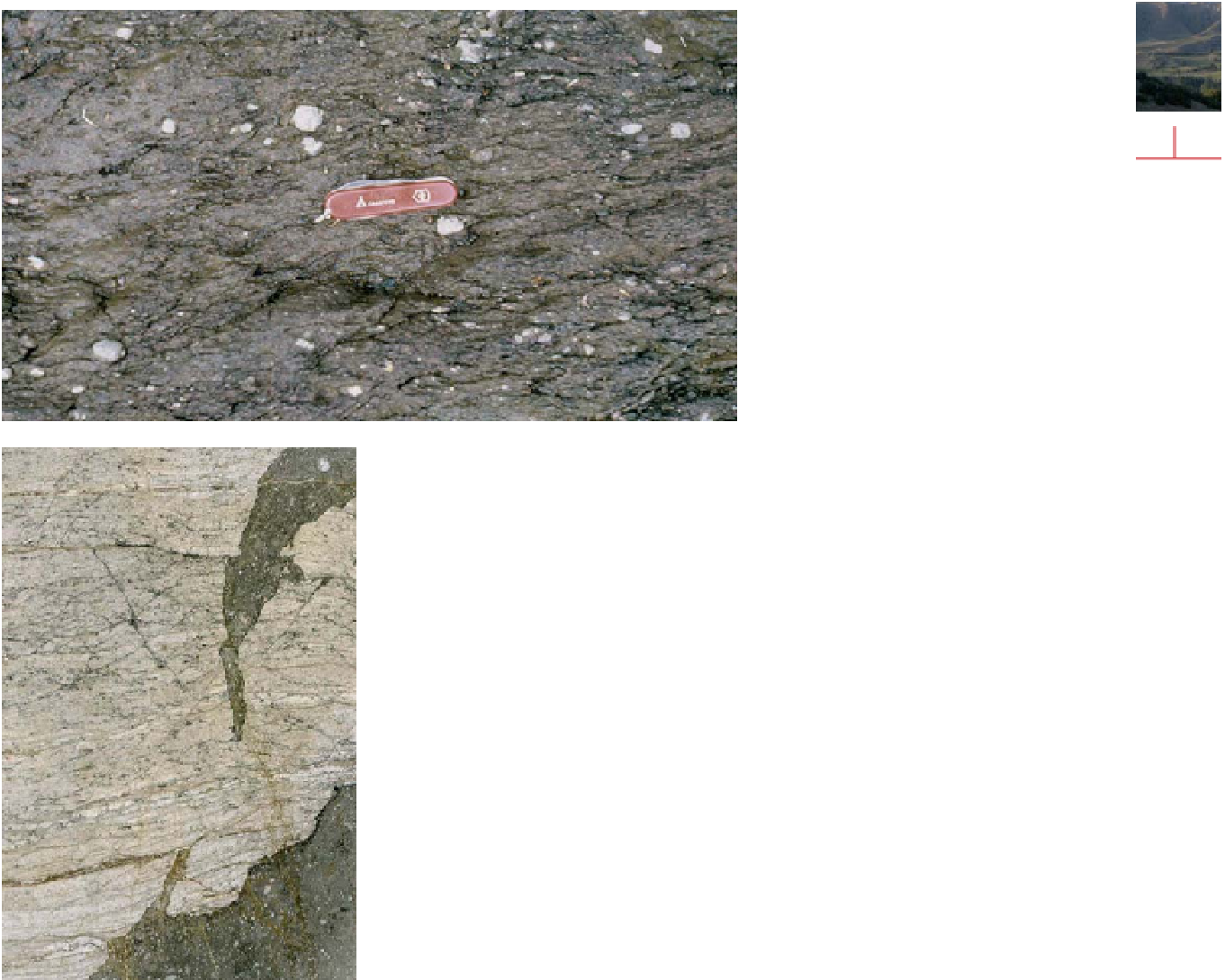Geology Reference
In-Depth Information
assessing the suitability of materials
in manufacturing and construction.
It is of equal importance in rocks,
in determining whether they are
strong enough to support buildings
or dams, for example. A given ma-
terial possesses three critical values
of strength -
compressive strength
,
tensile strength
and
shear strength
,
any or all of which may be important
depending on the use to which it is
being put. Moreover, the shear strength
depends also on the angle of the plane
of shear to the direction of the applied
stress, as shown in Figure 5.10A.
Materials can be tested in the labora-
tory under varying conditions of applied
stress and lithostatic pressure to find
the range of critical values at which the
material fails. The complex relation-
ship between normal stress, shear stress
and lithostatic pressure is essentially a
three-dimensional problem, but can be
reduced to two dimensions by assuming
that the intermediate principal stress
is approximately equal to the mean
stress. The stress state at failure (Figure
5.10B) is controlled by the
normal stress
(which we can assume equals the effec-
tive lithostatic pressure) and the
shear
stress
(which is proportional to the
stress difference
). Using this simplifica-
tion, the stress conditions at failure for
a given material at constant tempera-
ture can be represented by the
shear
failure envelope
(Figure 5.10C) where
both the shear stress and normal stress
at failure are represented by a point
on the envelope. The gradient of the
envelope, represented by the angle 'E'
in Figure 5.10C, is related to the angle
D that the shear fracture makes with
the principal stress axis (E= 90º-2D);
i.e. as E decreases, D increases towards
A
5
38
39
Figure 5.9
A.
Fault breccia with a fine-grained
matrix showing a slight foliation.
B.
Black
pseudotachylite vein containing small rock
fragments intruding cataclastic gneiss (x5).
B
the former controls the displacement
along the fracture plane, whereas the
latter acts across the fracture plane and
will either aid or inhibit displacement.
Relationship of shear fractures to the
stress axes
The planes of maximum shear stress
intersect along the intermediate
principal stress axis and theoreti-
cally lie at 45° to the maximum and
minimum stress axes, as shown in
Figure 5.10A. In real materials, however,
the shear fracture planes always make
a smaller angle (a) than 45° to the
maximum stress axis, and this angle
varies both with the type of material
and with the lithostatic pressure.
of the rock itself. Moreover, when con-
sidering the conditions for faulting to
take place, it is necessary to take into
account both the
shear stress
and the
normal stress
components on a given
fracture plane (
see
Figure 4.3), since
Strength of materials
The measurement of strength is
obviously of critical importance in



Search WWH ::

Custom Search